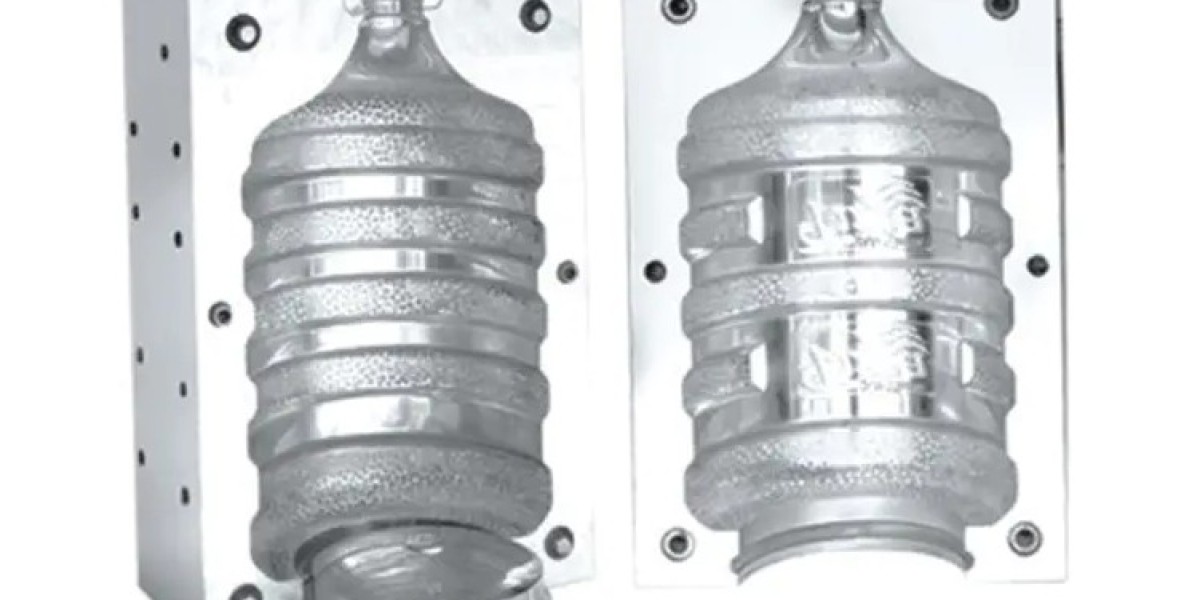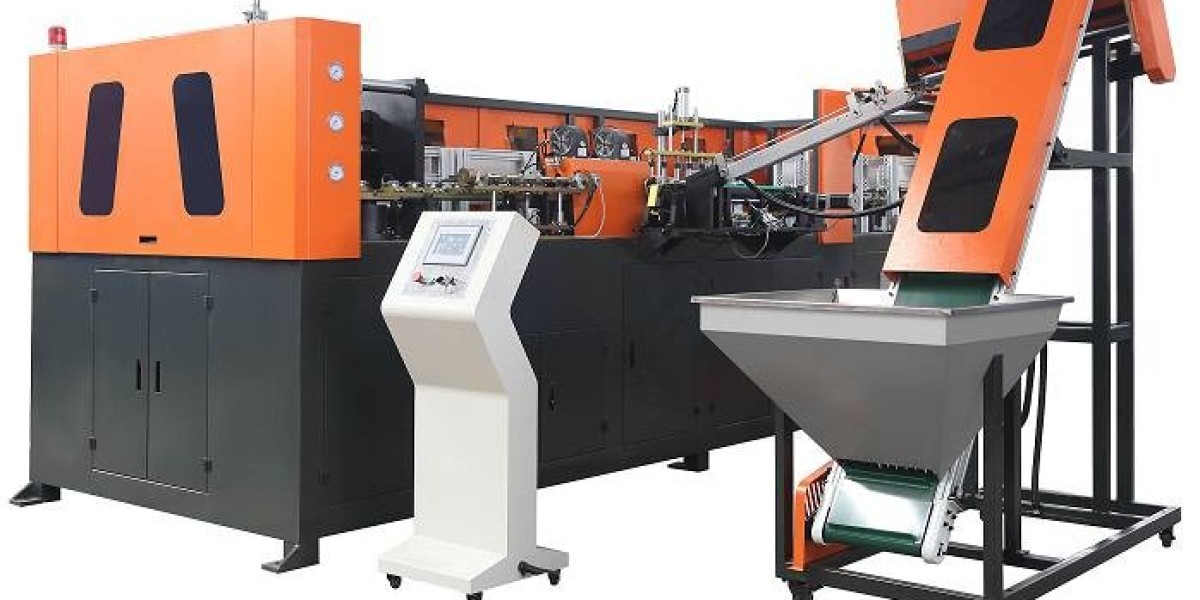Bottle blowing machines come in several different types, each designed to meet the specific needs of manufacturers based on production volume, bottle complexity, and material used. The two most common types of machines are the stretch blow molding machine and the extrusion blow molding machine. While both processes aim to create plastic bottles, they differ in how they shape and form the bottles, as well as in their applications.
Stretch blow molding machines are primarily used for producing bottles with higher clarity and strength, typically for packaging beverages and other consumer products. The process involves heating a plastic preform and stretching it vertically before air is blown into it. This stretching action aligns the polymer molecules, which increases the strength and clarity of the finished bottle. The stretch blow molding process is ideal for PET bottles, as it enhances the material’s strength without compromising its transparency.
Stretch blow molding machines are versatile and can be designed to handle various preform sizes and bottle shapes. They are typically used in high-volume production, as they are capable of producing bottles at a rapid pace while maintaining uniformity. These machines can also incorporate features like automatic bottle handling, which streamlines the entire production process.
Extrusion blow molding machines are used to produce bottles by extruding molten plastic into a mold, where air is injected to form the final shape. This method is suitable for manufacturing larger bottles, such as those used in the chemical and automotive industries, or containers with thicker walls. Extrusion blow molding allows for greater flexibility in producing bottles with various neck designs and sizes.
One advantage of extrusion blow molding is that it is typically more cost-effective for low-volume production runs, as the process does not require the use of preforms. Additionally, extrusion blow molding machines can be used to create bottles with unique designs or thicker walls, which may be required for specific applications, such as industrial chemicals or motor oils.
For companies looking to maximize efficiency, multi-stage blow molding machines combine the benefits of both stretch blow molding and extrusion blow molding. These machines are often used for large-scale production, where both the molding and blowing stages are integrated into a single system. The preform is molded, heated, and then blown in one continuous process. Multi-stage machines allow for greater control over the molding process, as well as faster production times and reduced energy consumption.
In addition to the basic types of machines, manufacturers may also offer specialized blow molding equipment, such as machines capable of producing bottles with unique shapes, sizes, or designs. Customization features, such as multiple cavities or multi-layered bottles, allow companies to further refine their production processes.
In conclusion, there are different types of bottle blowing machines available, each suited to specific applications and production needs. Whether using stretch blow molding, extrusion blow molding, or multi-stage blow molding, these machines enable manufacturers to create high-quality bottles efficiently and cost-effectively. The choice of machine depends on factors such as the type of product, production volume, and desired bottle features.



